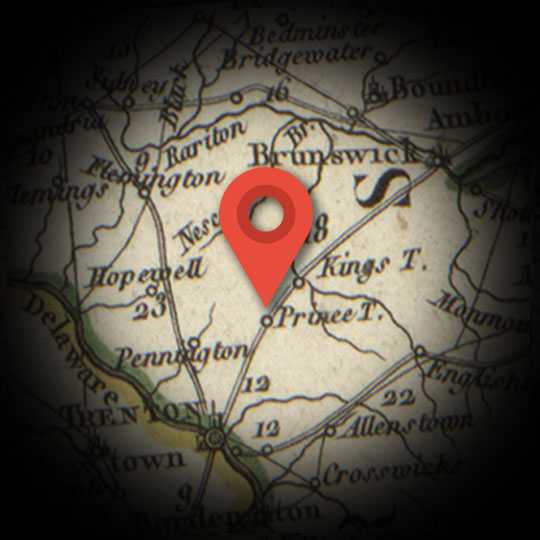PRINCETON
Explore
The burial place of Aaron Burr—you can visit his and other notables’ graves at the Princeton Cemetery—Princeton is a place that played an important role in Alexander Hamilton’s life three major times.
The College of New Jersey (which later became Princeton University) was in this time no more than this single building: Nassau Hall.
The College of New Jersey was a more esteemed school than King’s College back in New York. Hamilton had many more personal ties to this Presbyterian University.
Hamilton first came here to Princeton, probably by stagecoach, with his friend Hercules Mulligan. Hamilton’s application to the educational institute was denied because the ambitious young man expected to be able to hoover up all the college credits he needed in half the time.
In January, 1777, Hamilton was here as a soldier, in the snow, at the head of a New York artillery outfit during the Battle of Princeton. The Redcoats and their Hessian allies had taken over the college and were holed up in Nassau Hall. Hamilton may have had the honor of shooting cannonballs at the college that rejected him!
In 1783, Hamilton came to Princeton as a congressman under the weak Articles of Confederation Congress. This followed on from Congress being ejected from Philadelphia by a mob of mutineering Revolutionary War vets disgruntled by not having received the pay they had been promised.
Hamilton remained in Princeton throughout June and July, 1783. That period is notable because it’s when Hamilton first drafted a call for the United States to establish a more central and substantial government. The U.S. Constitution—and the modern federal government that document ordained—would eventually spring from like-minded individuals throughout the former colonies.

TIME FRAME:
1775, 1777, and 1783
